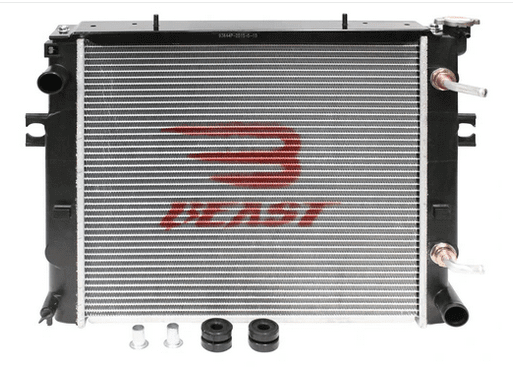The coolant system of a forklift is essential in ensuring that the engine works within the appropriate temperature limits. It also ensures that the engine doesn’t overheat. The vehicle cooling system has various components and the radiator is the most important. A radiator has different parts including the upper and lower hoses, the water pump, the coolant reservoir, and the thermostat.
Lifespan of a radiator
A radiator eliminates heat from the coolant after cycling through the engine. When not working properly, the engine overheats much faster. This might lead to considerable damage. How you maintain the coolant system determines how long the radiator will last.
Replenishing coolant regularly and never running straight water encourages the radiator to last for about three years. There is also a possibility that a well-maintained radiator can last up to 8 to 10 years. However, when buying a new radiator it is a good idea to ensure that it comes with a warranty.
Getting a new radiator
Radiators have varying lifespans depending on forklift usage and working conditions. There are unavoidable situations where you need to get a replacement for the forklift to run safely. When you discover that your engine overheats, a forklift radiator online is necessary. However, you have to find a reputable supplier to assist you to select the right radiator for your truck.
Additionally, the supplier should have an experienced team to give you technical assistance regarding the proper and safe installation of the radiator. A supplier with products from top brands will help you get the right radiator regardless of whether you’re making a direct replacement or upgrade. This will match your forklift and work requirements. A new radiator is necessary when you upgrade the engine. Powerful engines give off more heat and need an upgraded radiator to effectively handle the high heat output.
Signs of radiator failure
A radiator that doesn’t work properly causes the engine to overheat. It is very important to know the various signs to tell a failing radiator including:
- Flattened or folded fins
- Coolant leaking from beneath the radiator
- Rust in coolant
- Temperature spike beyond normal
- Cracks in plastic radiators
Causes of radiator failure
Various factors potentially cause radiator failure. Parts of the cooling system like the hoses are prone to failure at some point. Taking long to notice this puts the radiator becomes at risk of damage. A leaking hose allows coolant to escape from the cooling system. Failure of coolant to circulate through the cooling system makes the engine get a flow-on-effect. Consequently, the radiator becomes damaged from overheating.
Debris buildup causes clog that leads to radiator failure. Corrosion also shortens the radiator lifespan. Regular servicing and use of correct coolant are necessary to ensure the radiator is working properly. Stray current also has a risk of radiator damage.
You have to get a professional to test for stray current during the radiator installation process. Stray current happens during the modification of the electrical system or when fitting aftermarket electrical accessories.
Increasing the lifespan of the radiator
Low mileage significantly shortens the lifespan of a forklift radiator. For warehouses near the ocean, regular exposure of the forklifts to salty air or water shortens the lifespan of the radiator. The salt in air or water increases the corrosion rate. Proper maintenance including preventing debris and corrosion significantly increases the lifespan of a radiator.
Radiators are made from metal or plastic. Choice of radiator body will determine how long it will last. A copper or full-alloy radiator lasts longer than plastic aluminium. This is because plastic is prone to expansion and contraction while the radiator is heating and cooling. After some time, the radiator will develop cracks creating a need to get a replacement.
Taking care of a radiator
Regular service is an essential aspect of radiator care. The process involves replacing the hoses, coolant, and other components of the cooling system that show signs of wear. Ensure to check the coolant level whenever you’re checking the level of engine oil. You have a chance of noticing any coolant leaks or loss. This allows enough time to fix any problems before they escalate to cause considerable damage.
Always let a professional mechanic fix the radiator. You can’t tell when a problem might happen with your forklift radiator. However, always have the number of a trusted mechanic handy. Having an in-house mechanic to handle all forklift problems is a wonderful idea. Equally important is to ensure that you invest in quality radiators from reputable brands for your forklifts.
Coolant regularly cycles through the radiator to prevent the engine from overheating. This ensures there’s no forklift breakdown while operations are going on. The truck plays a significant role in ensuring operations flow in your warehouse. So, pay close attention when replacing or upgrading the forklift radiator.
